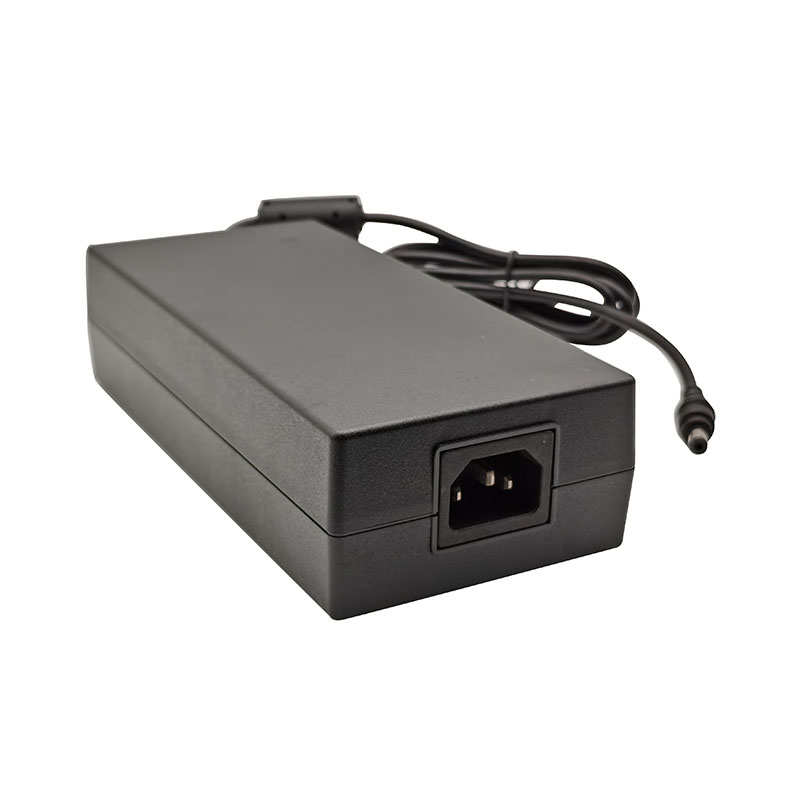The core function of the 160-250W medical AC DC desktop adaptor is to build a conversion interface between the main power supply of medical equipment and biosafe power. The topology of this type of adapter adopts full-bridge LLC resonant conversion technology, and achieves double isolation of the primary and secondary windings through magnetic integration. Its essential feature is reflected in the leakage current control mechanism, which uses a symmetrical layout of common-mode chokes and Y capacitors to suppress the patient contact current below the microampere level.

Compared with conventional adapters, the 160-250W medical AC DC desktop adaptor has a differentiated design in the insulation system, and triple-insulated wires and potting colloids build a redundant protection system. The dielectric withstand voltage test standard is raised to the series breakdown threshold of basic insulation and auxiliary insulation to ensure system integrity when a single insulation fails. The dynamic load regulation rate at the output end is optimized through a digital compensation algorithm to eliminate voltage glitches caused by transient power consumption fluctuations of life support equipment.
Thermal management uses a composite heat transfer path of thermal pads and heat sink fins to ensure that the maximum temperature of the 160-250W medical AC DC desktop adaptor case does not exceed the biocompatibility limit. The active PFC circuit at the input end makes the power factor tend to unity, reducing harmonic pollution to the medical building power grid. The essential value of this power conversion device is to create a zero-risk energy supply environment for Class II medical devices when they are in direct contact with the human body.
In terms of materials, there is an essential difference between the engineering properties of the 160-250W medical AC DC desktop adaptor and nylon materials. The former belongs to the field of power conversion equipment, while the latter belongs to the scientific system of polymer materials.